Introduction
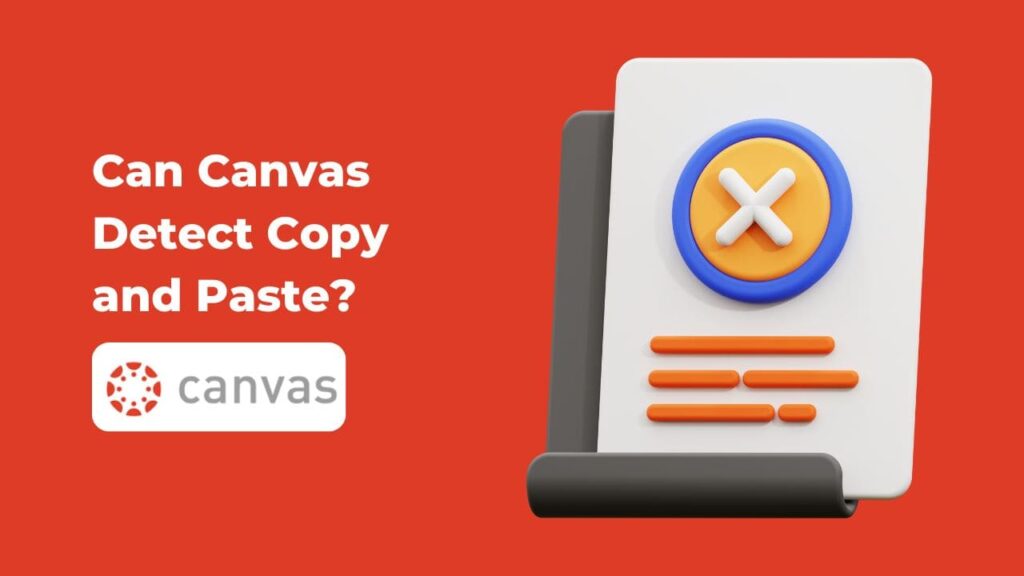
Have you ever been tempted to peek at someone else’s answers and got caught?
Or are you thinking about copying answers in Canvas but you’re worried about “Can Canvas Detect Copy and Paste”?
Don’t sweat it! This article is here to help.
We’ll talk about whether Canvas can tell if you’ve copied and pasted answers and I’ll give you a step-by-step guide on how to avoid getting caught.
It’s like having a cheat sheet for cheating (but don’t worry, we’re keeping it ethical).
So, grab your favorite mug, pour yourself some coffee, and let’s dive into the world of Canvas and plagiarism detection.
What Is Canvas?
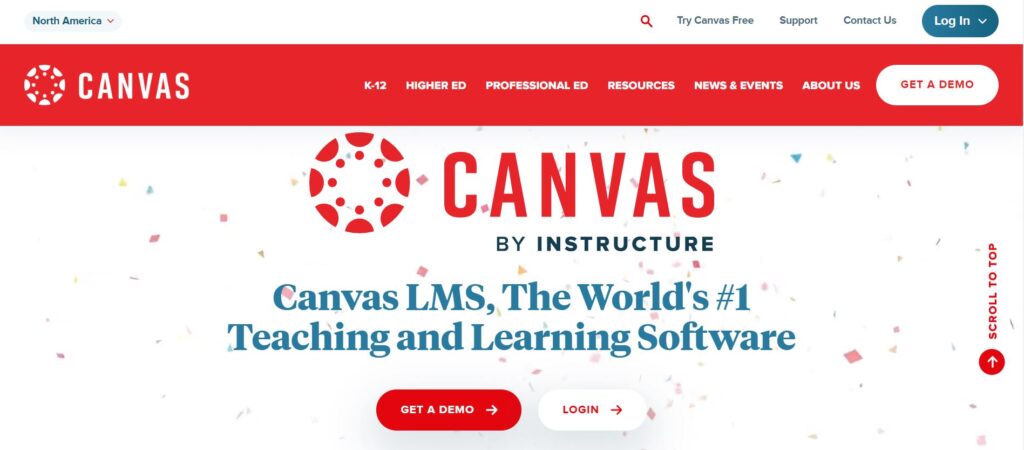
Imagine Canvas as your virtual classroom, accessible through your computer or phone.
It’s like a special website designed for schools and businesses to help teachers and trainers share lessons and assignments with students and employees.
For teachers, Canvas offers a bunch of tools to create engaging lessons.
They can make assignments, upload study materials, and even set up quizzes and tests.
And the best part? They can keep track of everyone’s progress easily.
Students, on the other hand, get to access all these resources in one place.
They can complete assignments, join discussions, and ask questions to their teachers, all without leaving the platform.
It’s like having a school inside your computer!
And if you’re someone who loves exploring new tools, Canvas has you covered.
You can find all sorts of extra features and apps to add to your Canvas experience, making learning even more interactive and fun.
So, whether you’re a student trying to ace your classes or an employee brushing up on your skills, Canvas is your go-to platform for learning and growing.
It’s like having a personal tutor right at your fingertips!
Canvas Plagiarism Detection Capabilities
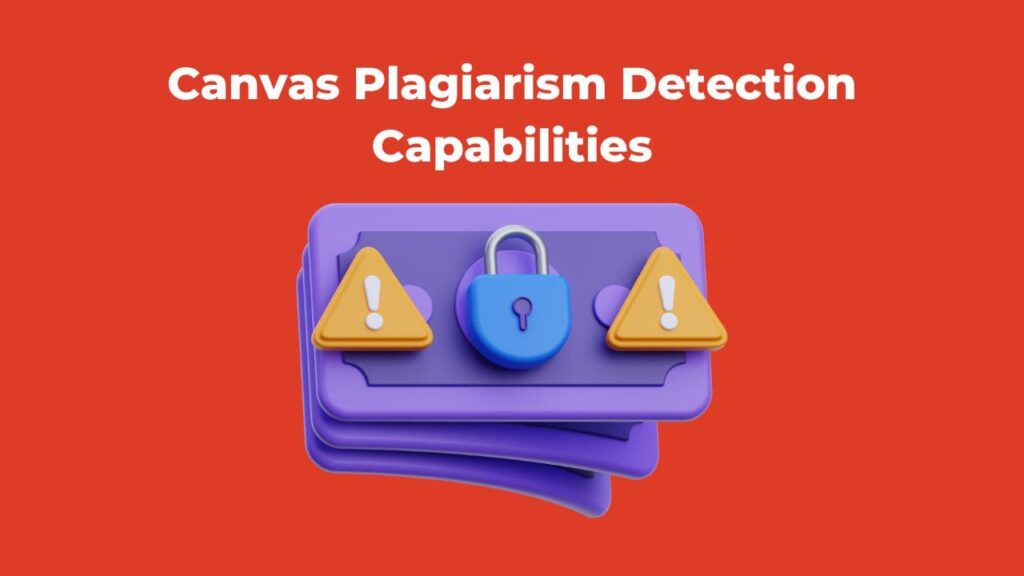
Plagiarism, simply put, is copying someone else’s work and pretending it’s yours.
It’s not fair to the person who did the work originally.
Now, when it comes to online exams and assignments, Canvas plays a big role in making sure everyone follows the rules.
It’s like having a digital guardian watching over everything.
It’s a smart assistant looking out for any signs of cheating.
So, when you’re using Canvas for tests or assignments, you can feel confident that everything is being checked to ensure fairness.
But exactly how Canvas does this?
Well, that’s something we’ll explore later.
Just know that with Canvas, everyone has a level playing field to show what they’ve learned, without resorting to cheating.
Can Canvas Detect Copy and Paste?
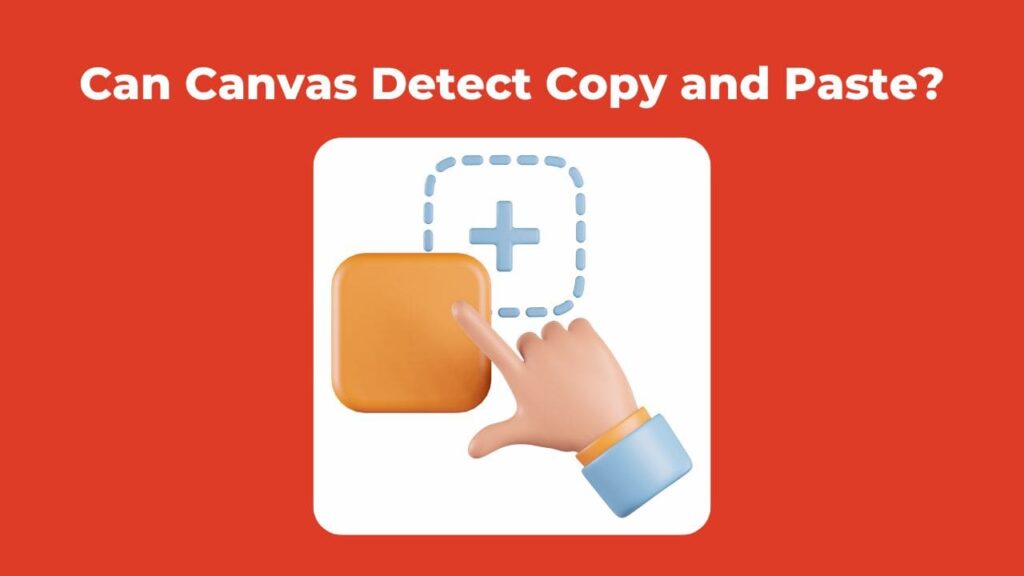
So, the big question: Can Canvas detect copy and paste or any sneaky plagiarism?
Well, the short answer is No.
Canvas itself doesn’t have a magic detector for copy-pasting.
But here’s the thing: just because Canvas doesn’t have one doesn’t mean you’re off the hook.
When you paste your text into Canvas for an assignment or test, it’s still going to be checked by your teachers.
They’ve got their eyes peeled for any signs of cheating. And trust me, teachers are pretty smart.
They know all the tricks and tactics cheaters might try to pull off.
So, even though Canvas won’t flag it automatically, your teachers are still on the lookout.
They’re not going to let any cheaters slip through the cracks.
So, it’s always best to do your own work and play fair.
After all, honesty is the best policy!
How Does Canvas Detect Copy and Paste?
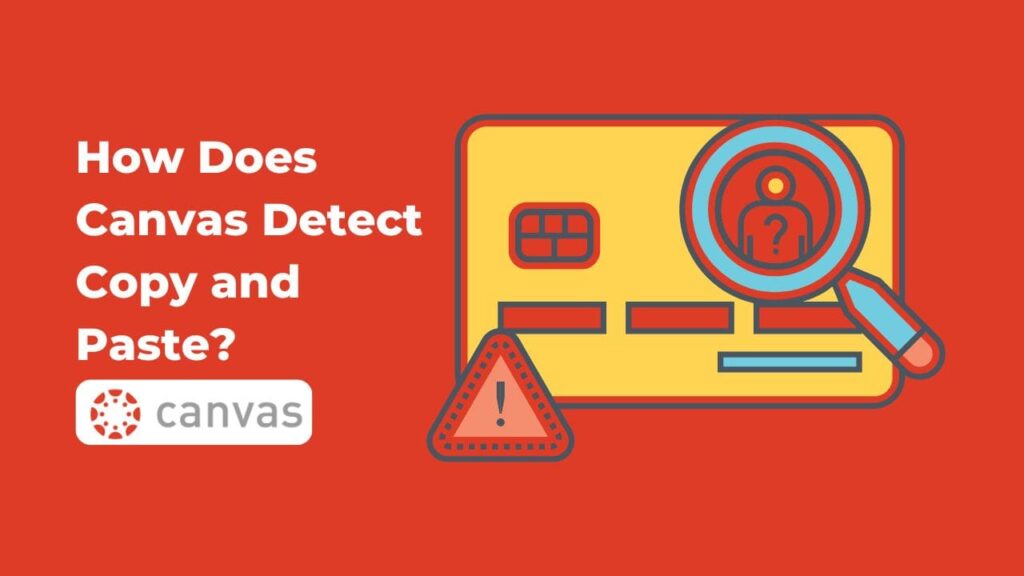
1. Manual Checking:
Teachers are like detectives when it comes to spotting cheaters.
They know their students well, so if your answer looks suspiciously similar to a top-performer’s, it’s going to raise a red flag.
Even if it’s just a coincidence, they’ll notice.
2. Using External Tools:
Canvas allows teachers to bring in extra tools and extensions like Copyleaks to help catch plagiarism.
Copyleaks scans through your text and compares it to a vast database to see if anything matches up.
It’s pretty accurate, catching about 97% of copied content.
3. Canvas Plagiarism Framework:
Ever heard of Turnitin? It’s a tool that works hand-in-hand with Canvas to sniff out copycats.
Teachers can pick the right settings and tools from Turnitin to keep an eye on exams and assignments for any signs of copying.
4. Using AI:
Teachers can also employ AI algorithms to lend a hand in catching cheaters.
These smart algorithms look for patterns in your answers that might suggest you’ve borrowed from someone else.
They’re like digital detectives, searching for clues.
Can Canvas Detect Copy and Paste On A Quiz?
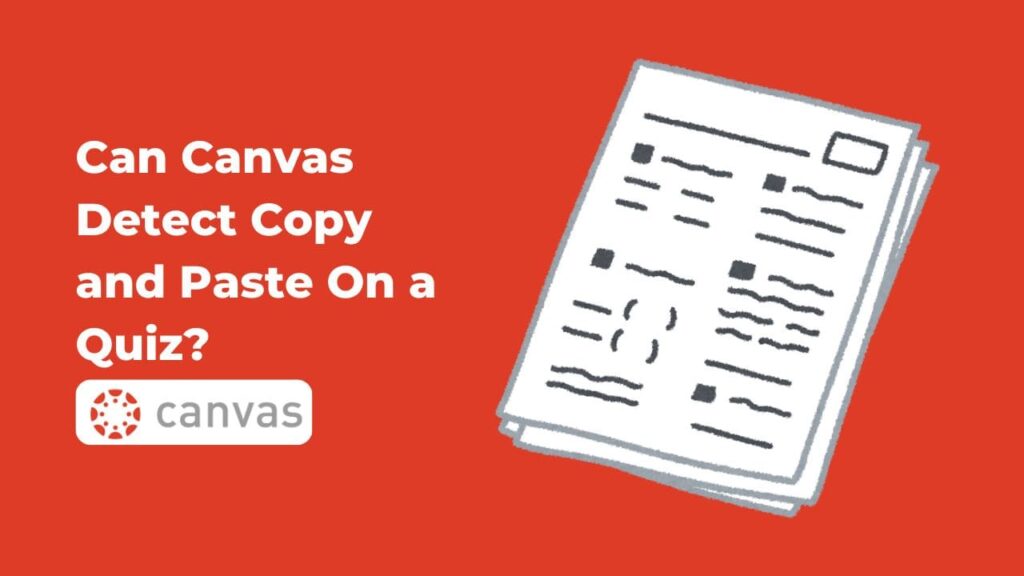
So, what’s a quiz? A quiz is like a little test where you answer questions to show what you’ve learned.
It’s usually done online, like on Canvas.
Now, onto the big question: Can Canvas detect copy and paste on a quiz?
Well, the simple answer is no.
Canvas isn’t designed to sniff out copy-pasting during quizzes. But why is that?
See, during a quiz, you’re usually under a time crunch, trying to recall what you’ve learned.
Since Canvas can’t peek into your brain, it relies on you to answer honestly.
It’s like an honor system. But hey, that doesn’t mean you should cheat!
Your teachers trust you to do your own work and show what you’ve learned.
Plus, think about it: if Canvas could magically detect copy-pasting during quizzes, it wouldn’t be fair to everyone.
Some students might have slower internet or technical issues, making it harder for them to answer quickly.
So, it’s important to keep things fair and honest.
In the end, quizzes are meant to test your knowledge and skills.
So, do your best, answer truthfully, and show off what you know! That’s what it’s all about.
Can Canvas Detect Copy and Paste In Proctored Exams?
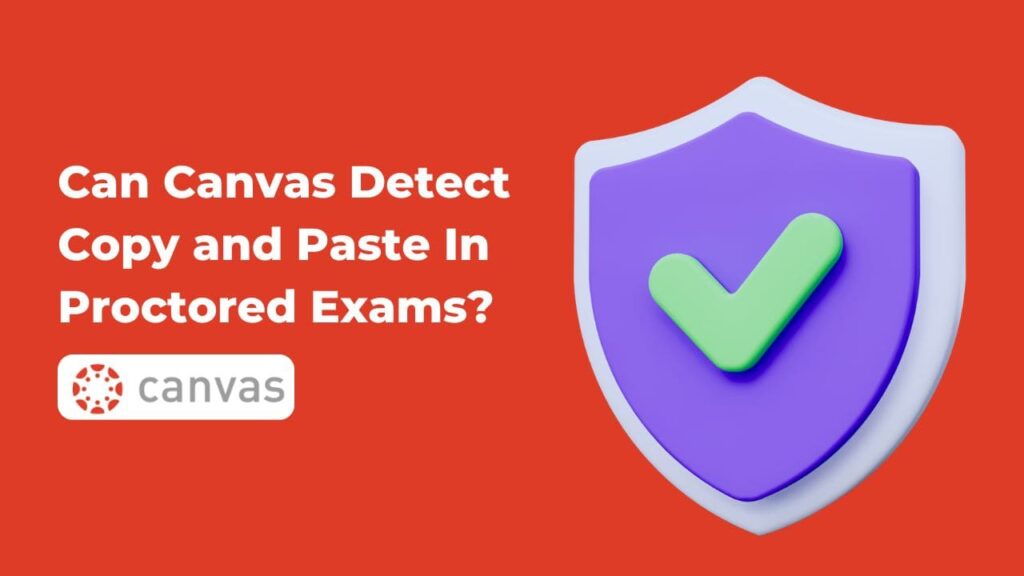
A proctored exam in Canvas is like taking a test but with someone watching over you to make sure you’re playing fair.
Think of it as having a teacher or proctor sitting right there with you, even though you’re taking the exam online.
Now, when it comes to proctored exams in Canvas, copying someone else’s answers is a big no-no. Why?
Because Canvas uses special tools like Respondus Monitor and Proctorio to keep an eye on things.
These tools can detect all sorts of cheating, from peeking at notes to copying and pasting answers.
And here’s the kicker: if your quiz or exam is labeled as “Remotely Proctored,” you better believe Proctorio will be on the lookout.
It’s like having a virtual proctor watching your every move.
So, if you think you can sneakily copy and paste answers during a proctored exam or quiz, think again.
Proctorio will catch you in the act.
How To Bypass Canvas Plagiarism Detection?

1. Steal Like an Artist:
Imagine you’re looking at a beautiful painting.
You love it so much that you want to create something similar, but you don’t want to copy it exactly.
Instead, you study the colors, the brushstrokes, and the composition.
Then, you use those ideas to paint your own masterpiece.
Similarly, when you’re writing an answer for a quiz or assignment, don’t just copy someone else’s words.
Instead, understand the main idea behind their answer and express it in your own way.
This way, even though the concept came from somewhere else, your answer will be unique and original.
2. Rephrase:
Picture yourself telling a story.
You’ve heard it before, but you don’t want to just repeat it word for word.
Instead, you put it into your own words, using your own style and language.
When you rephrase something, you’re essentially saying the same thing but in a different way.
So, if you come across an answer that you like, try to express it using your own words.
This not only helps to make the answer look like yours but also shows that you truly understand the topic.
3. Mix and Match:
Think of yourself as a chef in the kitchen.
You have a bunch of ingredients from different recipes, and you want to create something new.
So, you take a little bit from here, a little bit from there, and you mix them all together to make a delicious dish that’s uniquely yours.
Similarly, when you’re writing an answer, don’t limit yourself to just one source.
Combine ideas from different places to create a fresh take on the topic.
This way, your answer will stand out and show off your creativity.
4. Add Your Own Thoughts:
Have you ever had a conversation with a friend about a movie you both watched?
Instead of just summarizing the plot, you share your thoughts and opinions about the characters and the story.
When you’re writing an answer, don’t just regurgitate information.
Instead, add your own thoughts and insights to make it clear that the answer is coming from you.
This personal touch not only makes your answer more engaging but also demonstrates your understanding of the topic.
5. Cite Your Sources:
This is like writing a research paper.
You’ve found some really helpful information in a book, so you want to make sure to give credit to the author.
You do this by including a citation, which shows where you found the information.
Similarly, when you’re using information from other sources in your answer, make sure to cite them properly.
This not only avoids plagiarism but also shows that you’ve done your research and are drawing on credible sources.
It’s like giving credit to the chefs who inspired your recipe, acknowledging their contribution to your work.
Conclusion
In conclusion, while the question “Can Canvas detect copy and paste?” may linger in our minds, the reality is nuanced.
Canvas itself doesn’t possess a direct mechanism to flag copy-pasting automatically.
However, this doesn’t imply a free pass for unethical behavior.
Teachers remain vigilant, utilizing a combination of manual checks, external tools like Copyleaks, Turnitin integration, and AI algorithms to detect plagiarism.
Moreover, in proctored exams, tools such as Respondus Monitor and Proctorio act as digital watchdogs, ensuring integrity during assessments.
Nevertheless, there exist ethical strategies to navigate Canvas’s plagiarism detection.
By embracing techniques like paraphrasing, integrating diverse sources, infusing personal insights, and responsibly citing references, students can uphold academic honesty while showcasing their understanding and creativity.
Ultimately, Canvas serves as a platform fostering fair and transparent learning environments, where originality and integrity are paramount.
So, as we continue our educational journey, let’s remember to tread the path of knowledge with integrity, guided by the principles of honesty and respect.
FAQs
Q1. Can Canvas detect copy and paste?
No, Canvas itself doesn’t have a built-in feature to directly detect copy and paste. However, teachers use various methods to identify plagiarism, including manual checks and external tools.
Q2. How does Canvas ensure fairness in online exams?
Canvas employs tools like Respondus Monitor and Proctorio to monitor exams remotely, detecting any suspicious behavior such as copying answers or using unauthorized materials.
Q3. What tools does Canvas use for plagiarism detection?
Canvas integrates with external plagiarism detection tools like Copyleaks and Turnitin, allowing teachers to scan submitted assignments for plagiarism.
Q4. Is copying answers allowed in Canvas quizzes?
No, copying answers is not permitted in Canvas quizzes. While Canvas may not automatically detect copy-pasting during quizzes, teachers actively monitor for cheating behaviors.
Q5. How can students avoid plagiarism in Canvas assignments?
Students can avoid plagiarism by paraphrasing, combining ideas from various sources, adding personal insights, and properly citing their sources when using external information.

